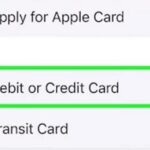This article will explain How To Get Overhead And Profit From Insurance? When dealing with insurance claims, particularly in the realm of property damage, securing overhead and profit is a crucial aspect. These terms refer to the additional costs that a contractor charges for managing a construction project, which are typically covered by insurance policies in the event of damage.
However, obtaining these funds from insurance companies can be challenging. Understanding the intricacies of insurance policies and employing effective negotiation strategies is key to successfully claiming overhead and profit.
Key Takeaways
- Understanding the basics of overhead and profit in insurance claims.
- Strategies for effectively negotiating with insurance companies.
- Tips for documenting and presenting your claim to maximize overhead and profit.
- Legal considerations and the role of public adjusters in the claims process.
- Impact of state laws and regulations on insurance claims for overhead and profit.
How To Get Overhead And Profit From Insurance?
Gaining overhead and profit from an insurance claim, especially in situations like property damage repairs, involves a series of detailed steps. Here’s a comprehensive breakdown of the process:

Understand Your Insurance Policy
- Read your insurance policy meticulously. Look for clauses that mention coverage for overhead and profit. Understanding your policy’s specifics is crucial in determining your eligibility for these costs.
- If the policy language is unclear or you’re unsure about the coverage, contact your insurance provider for clarification.
Assess the Damage and Choose a Contractor
- Assess the property damage thoroughly. It’s advisable to do this with a professional contractor who can provide a detailed estimate.
- Choose a licensed contractor experienced in dealing with insurance repairs. Their familiarity with insurance processes can be advantageous.
Obtain a Detailed Estimate
- Ask the contractor for a detailed estimate of the repair work. This estimate should explicitly include overhead and profit as separate line items.
- The estimate must be comprehensive, covering all aspects of the repair work needed.
Document Everything
- Document all damages with photographs, videos, and detailed notes. This evidence is crucial for substantiating your claim.
- Keep a record of all correspondence with the insurance company, contractors, and any other related parties.
File the Insurance Claim
- Submit your claim to the insurance company along with the contractor’s estimate and your documentation of the damage.
- Be clear and concise in your communication, emphasizing the need for overhead and profit in the claim.
Negotiate with the Insurance Adjuster
- The insurance company will send an adjuster to assess the damage. Be present during this assessment to provide any necessary information.
- Be prepared to negotiate. Adjusters may initially offer a lower settlement or omit overhead and profit.
Utilize the Services of a Public Adjuster if Necessary
- If negotiations with the insurance adjuster are challenging, consider hiring a public adjuster.
- Public adjusters are skilled in negotiating with insurance companies and can often secure a more favorable settlement.
Review the Settlement Offer
- Carefully review the settlement offer from the insurance company. Ensure it covers the repair costs, including overhead and profit.
- Don’t rush to accept the first offer if it doesn’t meet your expectations or cover all necessary expenses.
Dispute Resolution
- If the settlement offer is unsatisfactory, you can dispute it. Provide additional documentation or evidence to support your claim.
- In cases of a stalemate, legal advice may be necessary. An attorney specializing in insurance claims can offer guidance and representation.
Finalize the Claim
- Once a satisfactory settlement is reached, finalize the claim. Ensure all paperwork is completed accurately.
- Keep records of all final settlements and agreements for future reference.
Proceed with the Repairs
- After finalizing the claim and receiving the settlement, proceed with the repairs as per the contractor’s estimate.
- Ensure the work is completed satisfactorily and in line with the agreed-upon terms.
Post-Repair Review
- After the repairs are completed, review the work to ensure it meets the required standards.
- Keep all post-repair documentation, including invoices and receipts, in case of future queries or issues.
Remember, each insurance claim is unique, and the process can vary depending on the specifics of your situation and your policy. Being informed, prepared, and proactive at each step is key to successfully navigating the process of claiming overhead and profit from insurance.
Basics of Overhead and Profit in Insurance Claims

Understanding Overhead and Profit
Overhead refers to the general operating costs of a business, such as office rent, utilities, and administrative expenses. Profit, on the other hand, is the financial gain realized by a business after all expenses have been paid. In the context of insurance, these terms are significant when filing a claim for property damage, where a contractor is involved in the repair process.
Insurance Policy Coverage for Overhead and Profit
Most insurance policies implicitly include coverage for overhead and profit. However, the policy’s language can vary, affecting how these costs are calculated and reimbursed. It’s essential to thoroughly review your policy to understand the extent of coverage provided for these expenses.
Negotiating with Insurance Companies for Overhead and Profit
Effective Communication Strategies
Clear and assertive communication with your insurance provider is crucial. Outline your claim’s details, emphasizing the necessity of overhead and profit in the repair process. Be prepared to counter any objections or reductions proposed by the insurance adjuster.
Importance of Documentation
Documenting all aspects of the damage and repair process is vital. This includes detailed contractor estimates, invoices, and any correspondence related to the claim. Well-organized documentation can significantly strengthen your position during negotiations.
Documenting Your Claim
Detailed Contractor Estimates
Obtain comprehensive estimates from contractors that explicitly break down the costs, including separate line items for overhead and profit. This clarity helps in justifying these expenses to the insurance company.
Presenting Your Claim Effectively
Present your claim in a structured and professional manner. Include all relevant documents and highlight the parts that specifically relate to overhead and profit. A well-presented claim can expedite the approval process.
Legal Considerations and Public Adjusters

Understanding Your Legal Rights
Be aware of your legal rights regarding insurance claims. In some cases, legal action may be necessary to ensure fair compensation for overhead and profit.
Role of Public Adjusters
Public adjusters can be invaluable in navigating the complexities of insurance claims. They are experienced in dealing with insurance companies and can advocate effectively on your behalf.
Impact of State Laws and Regulations
State-Specific Insurance Laws
Insurance laws vary by state, influencing how claims for overhead and profit are handled. Familiarize yourself with your state’s regulations to better understand your entitlements and obligations.
Regulations Affecting Claims Process
State regulations can also dictate the claims process, including timelines for filing and resolving claims. Being aware of these regulations can help you manage your expectations and strategy.
How Do You Calculate Insurance Profit?

Components of Insurance Profit Calculation
Insurance profit calculation involves understanding the difference between the premiums received and the claims paid out. The profit margin is determined by deducting expenses, such as claims and operating costs, from the total premiums collected.
Factors Influencing Profit Margins
Various factors, including claim frequency, underwriting standards, and investment income, significantly impact the profit margins of insurance companies. It’s crucial to understand these factors when assessing the profitability of an insurance policy.
How Is Overhead And Profit Calculated?

Breaking Down Overhead Costs
Overhead costs in the context of insurance claims usually include the operational costs incurred by contractors during repairs. These costs typically encompass office expenses, employee salaries, and equipment maintenance.
Calculating Profit Margins
Profit margins are generally calculated as a percentage of the total cost of the project. The industry standard for overhead and profit is often 10% for overhead and 10% for profit, although this can vary depending on the contractor and the nature of the work.
When Should Insurance Pay Overhead And Profit?
Conditions for Insurance Payout
Insurance companies are generally expected to pay for overhead and profit when the repair work necessitates the services of a general contractor. This is typically in scenarios where complex or multiple trades are involved in the repair process.
Understanding Policy Terms
The obligation to pay overhead and profit also depends on the specific terms and conditions of the insurance policy. Policyholders must review their policies to understand the circumstances under which these costs are covered.
Conclusion
Successfully obtaining overhead and profit from insurance requires a blend of knowledge, documentation, and negotiation skills. Understanding your policy, effectively presenting your claim, and possibly enlisting the help of professionals like public adjusters can significantly enhance your chances of a favorable outcome.
Always be mindful of the impact of state laws and regulations on your claim and don’t hesitate to seek legal advice if necessary. Remember, being informed and prepared is your best strategy in navigating the complexities of insurance claims for overhead and profit.
People Also Ask
Can I claim overhead and profit for DIY repairs?
Typically, overhead and profit are claimed when a licensed contractor is involved. DIY repairs may not qualify for these costs under most insurance policies, as they are specifically tied to contractor management and operational expenses.
What role do public adjusters play in claiming overhead and profit?
Public adjusters specialize in handling insurance claims on behalf of policyholders. They can guide you through the process, help with documentation, and negotiate with insurance companies to ensure fair compensation for overhead and profit.
How do state laws affect claims for overhead and profit?
State insurance laws and regulations can significantly impact how claims for overhead and profit are processed and paid. These laws dictate the conditions and timelines for filing claims and can vary widely between states.
Are overhead and profit always covered in homeowners’ insurance policies?
Coverage for overhead and profit varies by policy. Most homeowners’ insurance policies implicitly include it, but it’s crucial to review your policy’s language to understand the coverage extent for these costs.

Muhammad Talha Naeem is a seasoned finance professional with a wealth of practical experience in various niches of the financial world. With a career spanning over a decade, Talha has consistently demonstrated his expertise in navigating the complexities of finance, making him a trusted and reliable figure in the industry.









